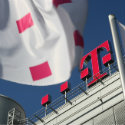The German operator says the deployment of FTTH could help it to retire legacy platforms and shut down facilities.

NICE, France -- Next Generation Optical Networks -- Is Deutsche Telekom about to change its position on FTTH?
The German telecom incumbent has so far refused to make any firm promises about a widespread rollout of FTTH networks in its domestic market. That's perhaps not surprising. According to Sascha Vorbeck, Deutsche Telekom AG (NYSE: DT)'s head of network development core, experts reckon it would cost between €60 billion ($67 billion) and €80 billion ($89 billion) to connect every home in Germany using fiber-to-the-home technology.
To boost connection speeds for customers, and meet the challenge from high-speed cable networks, the operator has been using technologies like VDSL2 and vectoring, which bring fiber closer to premises but retain the "last-mile" copper connection. This is far more economical, from a capex perspective, but it means customers cannot benefit from the very highest-speed services found in other parts of the world. Germany has a rather unambitious goal of providing 50Mbit/s services to 80% of its premises by 2018. (See DT's Jan van Damme Flexes Quads.)
There are further downsides to those copper-based broadband technologies, however, as Vorbeck outlined at today's Next Generation Optical Networks event in Nice, France. Because broadband signals travel poorly over long distances on copper networks, Deutsche Telekom is being forced to maintain sites that are just a few hundred meters from customer premises. Those could be phased out in an FTTH environment.
According to Vorbeck, Germany features a total of 2,059 cities -- large and small -- and Deutsche Telekom currently maintains nearly 10,000 sites across these markets. The introduction of FTTH and greater "automation" would allow the operator to locate sites at a distance of up to 18km from customer premises and reduce the total number of sites to around 3,300. This would clearly help Deutsche Telekom to slash opex and fatten margins while sales are under pressure: Fixed-line revenues for the first three months of 2016 fell by 1.7%, to about €2.4 billion ($2.7 billion), compared with the year-earlier period.
For more fixed broadband market coverage and insights, check out our dedicated broadband content channel here on Light Reading.
While it would be a mistake to conflate fiber infrastructure with all-IP technology, Vorbeck also suggests that copper dependency is hindering the efforts to retire old platforms and complete the transition to an all-IP network. This, in turn, could have a knock-on impact on the introduction of various software and virtualization technologies, which form a key part of Deutsche Telekom's plans to develop a single network spanning all of its central and eastern European markets. (See DT's Pan-Net Picks Up the Pace.)
As previously announced, Deutsche Telekom wants to switch off all of its PSTN-based systems in Germany by the end of 2018. But that target looks challenging: Just 37% of Deutsche Telekom's fixed lines were IP-based in March this year, up from 25% in March 2015. At the current rate of progress, Deutsche Telekom will have converted only 78% of its fixed lines to all-IP technology by March 2019.
Deutsche Telekom continues to base its broadband strategy on the prolonged use of copper. Having already made investments in VDSL2 and vectoring, it is now looking at another copper-based technology called G.fast, which could bring about further improvements in connection speeds by extending the frequency range over which signals travel. Yet executives are increasingly talking about FTTH as a "final step" the company will have to take. The reasons for that look clearer than ever. But if the investment hurdle is as big as experts make out, a Deutsche Telekom-led FTTH rollout could be a long time coming.
— Iain Morris, 

 , News Editor, Light Reading
, News Editor, Light Reading
Read more about:
EuropeAbout the Author(s)
You May Also Like











